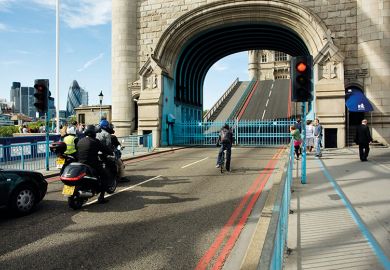The government has confirmed a significant cut to its estimate of the public subsidy on student loans, after what critics called an “unfair retrospective change” to repayment terms.
Jo Johnson, the universities and science minister, revealed in response to a written Parliamentary question that the estimate of the Resource Accounting and Budgeting (RAB) charge - what proportion of student loans is likely to be written off and therefore covered by the taxpayer - is now between 20 and 25 per cent.
The government’s November spending review had said the RAB charge would be lowered to “around 30 per cent”.
Prior to that, the last public estimate had been 45 per cent after graduate earnings forecasts were lowered – prompting critics to claim the cost of student loans was becoming unsustainable.
When the new £9,000 system was planned in 2010, the government said that only 30 per cent of loan outlay would be written off.
Pam Tatlow, the Million+ chief executive, wrote in a blog on the latest RAB change that “the funding of higher education is routinely based on smoke and mirrors accounting, and this looks to be another example”.
The RAB change comes about thanks to two factors. First, the spending review confirmed that the government is pressing ahead with its controversial move to freeze the repayment threshold on loans at £21,000 until April 2021.
The move breaks the government’s original pledge that the threshold would be uprated in line with earnings. It is a retrospective change, meaning existing students and graduates who took out loans after 2012 will be forced to pay more.
Second, the spending review also confirmed that the discount rate – the government’s figure on how much it expects to discount future loan repayments taking into account factors such as its borrowing costs – is being lowered from 2.2 per cent above the retail prices index measure of inflation to 0.7 per cent above.
GuildHE, one of the sector’s two representative bodies, called the change on student loan terms an “unfair retrospective change” that would prompt doubts among future students about whether to go to university.
Mr Johnson’s statement on the RAB came in answer to a question from Gordon Marsden, Labour’s shadow higher education, further education and skills minister.
Mr Johnson said: “We estimate that the RAB charge for full-time tuition fee and maintenance loans, and part time fee loans, is between 20 per cent and 25 per cent.
“These estimates take into account the changes to student finance and the new HM Treasury discount rate used to value the student loan book announced at the Spending Review and Autumn Statement 2015.”
Ms Tatlow said the RAB change “potentially puts to bed the argument that the HE funding system in England is no longer sustainable. It also paves the way for the future sale of the student loan book, which has been deferred due to ‘market conditions’. After all, writing-off 25p in the pound of student loans looks, at least on paper, a much better deal than writing off 55p in the pound.”
But she added that the change in repayment terms means “graduates themselves will pay more for longer, shifting the balance of funding higher education even further towards students and away from the state. Rather than affordability for government, perhaps the political argument will shift to one of fairness.”




